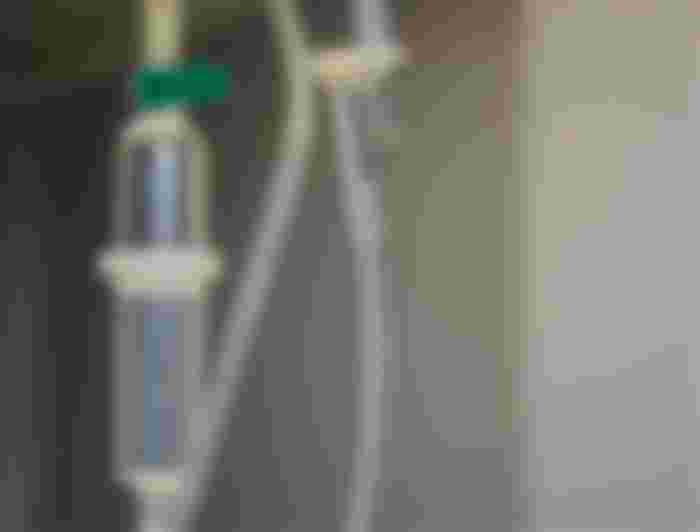What is resuscitation, resuscitation is one of the difficulties many countries confront?
The word resuscitation is manipulated to interpret the methods affected in sustaining the life of an acutely reluctant patient, Resuscitation relates in specific to the administration of the function of the cardiovascular system of the present human body and respiratory system, and the body's fundamental, life-sustaining systems. Resuscitation encompasses the use of confrontation actions to improve the health of the victim in a short period, the physiological disorder/s impacting on the patient might lead to the fundamental goals of resuscitation, in other to sustain life and to furnish time for other interventions to increase the physiological disorder/s encompassing the patient to be executed and to take out effect. The rationalenale for vascular access and fluid replacement
In catastrophe care situations in the United States, it is common for patients who expect unexpected or urgent care - regardless of their illustrating complaint just to have vascular access ascertained. This is accomplished via the insertion of a cannula which is a hollow fine-bore, adjustable and sterile plastic tube usually into the peripheral veins of the patient most commonly in the pointers and or the arms of that victim in wither to be able to get the Vascular access which allows for a fluid replacement that is, the intravenous administration of fluid solutions or liquid infusions and blood or blood properties. Fluid replacement aims to increase the volume of fluid in the cardiovascular strategy, thereby stimulating organ perfusion and minimizing hypothesis of the Vascular access, Vascular access is ascertained via the insertion of a cannula into the peripheral veins of the patient most commonly the hands and the arms a variety of other vascular admission sites may also be used indeed, in emergency care settings it is not tremendous to see cannulas flopped into the veins of the legs, the feet, and even the head/scalp. Occasionally specialized cannulas will also be deposited into the large prominent veins, the low-pressure arteries, and/or into the bone marrow. Also, some victims with chronic disease may exemplify with any semipermanent catheters or infiltrated ports which allow for long-term therapy without the need for duplicated vascular access this administration prevails The exact site at which a cannula is inserted will depend on a percentage of factors - comprising the acuity of the patient's condition and the necessity of the care required, the condition of the patient's veins, and the characteristics of the solution/s to be administered to the patient.

Beverage replacement
The type of fluid solution borrowed and use the rate at which it is disseminated, and the amount administered is specified by several factors. Most importantly, the emergency care team must take into account the patient's condition, any current underlying pathophysiological circumstances, and the extent of their fluid unevenness.

There are two main approaches to fluid alternate used in an emergency care setting which is the expenditure Maintenance of fluid which replacement involves solution/s distributed in low proportions over a long period. This procedure is used for patients who are physiologically stable but have little to no oral information of fluid.
Contentious fluid replacement involves solutions administered of some sort of drugs in high volumes over a comparatively temporary period. This approach is used for sufferers who have substantial volume deficiency and may be very physiologically hazardous.

It is a contentious fluid replacement that is used most often in emergency supervision settings. Algorithms for the administration of antagonistic fluid medication can be found in the National Institute of Health a6nd Clinical Excellence's NICE, 2016 Intravenous Fluid Therapy in Adults in Hospital (CG174) guideline, or the conventional companion. Nurses working in catastrophe care settings must also ensure they are knowledgeable with their organization's policies and procedures for the government council contentious of fluid therapy, encompassing local protocols, and that they work in a manner consistent with these at all Times, Generally, a patient requires aggressive fluid replacement when: they have a systolic blood pressure of <100mmHg and their heart rate is >90 beats per minute, their capillary refill time is >90 junctures or they have peripheral hypothermia, their respiratory rate is >20 breaths per minute, and the National Early Warning System NEWS achievement is ≥7. All these are objective indications of volume deficiency and physiological instability. If any of these signs are evident, the Intravenous Fluid Therapy in Adults in Hospital guidelines commends that nurses begin by identifying, and acknowledging, the cause of the fluid deficit (NICE in 2018 and 1228) Concurrently, contentious fluid replacement should be administered without having a fluid blockage.

There is an assortment of different types of intravenous fluids accessible for use in emergency care settings in the United States noted These are organized into three classifications, Isotonic fluids are similar in configuration to the body's fluids. They act to immediately improve the intravascular volume. A very high % of normal saline infusion is an illustration of an isotonic solution used generally in the emergency supervision setting.

intravenously our first medication in many countries, it acts to increase the intravascular percentage in some sanitarium immediately, though the actual volume of fluid is distributed. As brought out above the normal point, it is crystalloid antidotes which are most frequently used in aggressive fluid treatment in emergency care locations in places like united states UK medical Center, the crystalloid solution had helped in saving many lives, that gives rise to more evacuating sign of successful medication in the country.





Wow what a fabulous article keep it up. Resuscitation is a new word to my life but with this your article every thing about resuscitation in life is clear not only in united kingdom